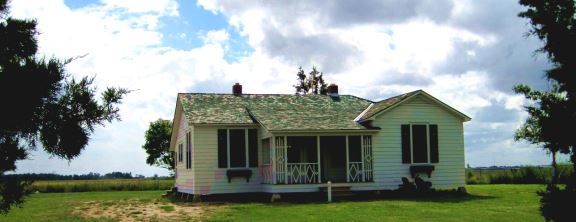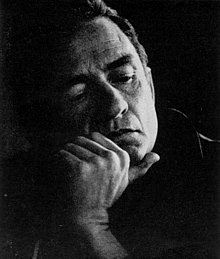From Dyess to Nashville
by Joe Goodell

The land was vast and rich; the families, in vast numbers, were not rich; they were beyond destitute, they were starving. Both climate and economy, on errands of menace, had conspired to oppress, then to subdue them.
Such conditions consumed Mississippi County in northeast Arkansas during the ’30s, where William R. Dyess owned a 15,000-acre “plantation.” His land, though not well developed, was suitably fertile, and his idea appealed to Harry Hopkins, a key advisor to FDR: provide $3 million for him, as Arkansas’s first WPA administrator, to arrange his holdings into 20 to 40-acre plots along AR 297.
His project: build roads, then a house and a barn for every one of 500 plots. “Resettle” a qualifying family onto each one; provide a mule, a cow, groceries, and supplies, all to be repaid after the tenant cleared the land and brought in the first crop ….. cotton, corn, beans. It was a colony, called Dyess, with an administration building, schools, hospital, bank, library, theater, and a few supporting businesses.
Ray and Carrie Cash, with their seven children, including J.R., born three years before in Kirkland, did qualify. In March 1935, with sturdy confidence and belief in themselves, a trust in the land and promise of hard work, the Cash family acquired the property at 4791 West CR 924 and the lease-mortgage agreement.

The intent of Mr Dyess succeeded because the Cash family and the others succeeded. Their cotton acreage where J.R. began working at age five, despite the flood of 1937, he later memorialized with his song “Five Feet High and Rising.”
But “J.R.” was insufficient when Carrie entered him in school, so she quickly provided “John.” Until 1950 Jonny Cash worked the family land and attended school in Dyess. He endured the years of hardship including family tragedies. Encouraged by Mom he developed a sustaining faith, which he accompanied by voice and guitar. As VP of his high school graduating class he delivered a stirring and determined seven-word commencement address: “Never, never, never, never, never give up.”
The former Cash home is in good condition enjoying a restoration by a grant from ASU. A few more of Mr. Dyess’ houses still dot the featureless, but luxuriant land, Delta flat to the horizon, 360 degrees around. It appears lonely, and for a family of nine too small, scarcely 1,000 square feet and just five rooms. It is based on cinder blocks, white-washed clapboard, two chimneys, front and back porch, dark green shutters, and is set back across a bit of lawn from the gravel road at the end of a short entryway framed by two large evergreens.
Three miles east lies the restored 1934 Colony House with its handsome woodwork matching the original. It will accommodate Dyess City Hall, a visitor’s center, and the set of large placards each featuring a high school graduating class from the ’50s.
Signs at the house and in town remind us of the “hardscrabble farming youth” who left his mark from Starkville, Mississippi, to Nashville, Tennessee, to Folsom, California, and his exceptionally distinctive Country, R&R, Folk, Blues, and Gospel music around the globe.

Images: Wikimedia


